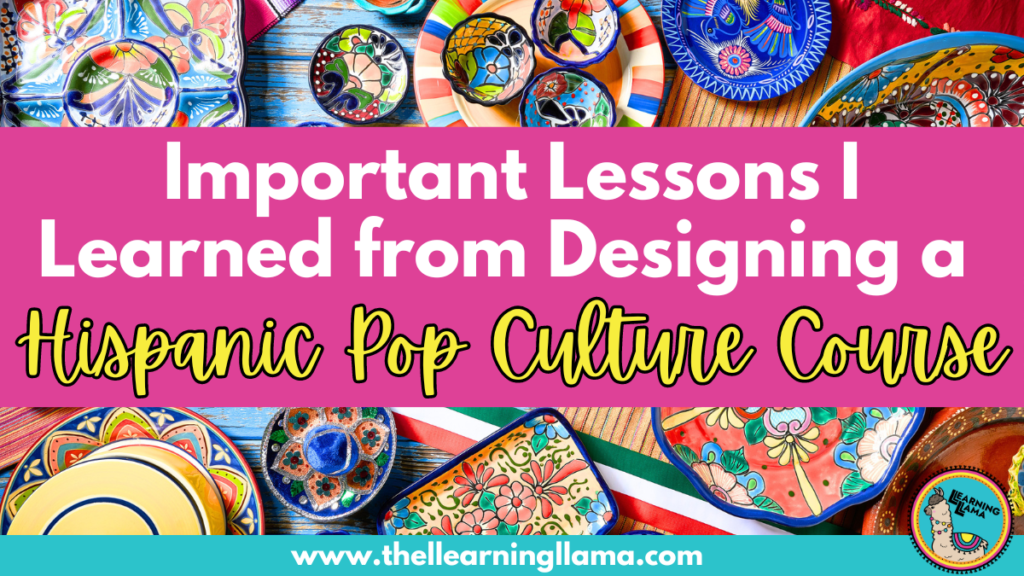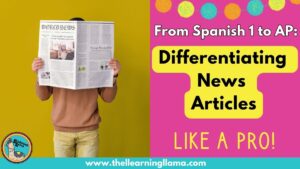World of Learning’s Curriculum Storyboards
I have been teaching as a virtual Spanish teacher at World of Learning (WOL) since 2021. I am proud to work for an intermediate unit that services school districts that are having a hard time filling world language teacher positions. We provide asynchronous and synchronous world language courses using comprehensible input and authentic materials.
When I first started, our courses were heavily based on grammar and text-book style lessons. But, WOL was quickly making a transition to storyboarded courses with a focus on comprehensible input.
The idea of curriculum storyboards comes from Heidi Hayes Jacobs and Allison Zmuda. It is based on the concept that we are “hardwired” for stories. Educators can apply a narrative approach to replace old-style coverage of material. By using a storyboard, we provide a visual learning journey and foster a deeper connection between students and the material they are studying.
When designing a storyboard curriculum, each unit gets a visual icon to represent the learning students will be doing. Take a look at these icons for my Spanish 3 Hispanic Pop Culture course. Can you figure out what my course is teaching?
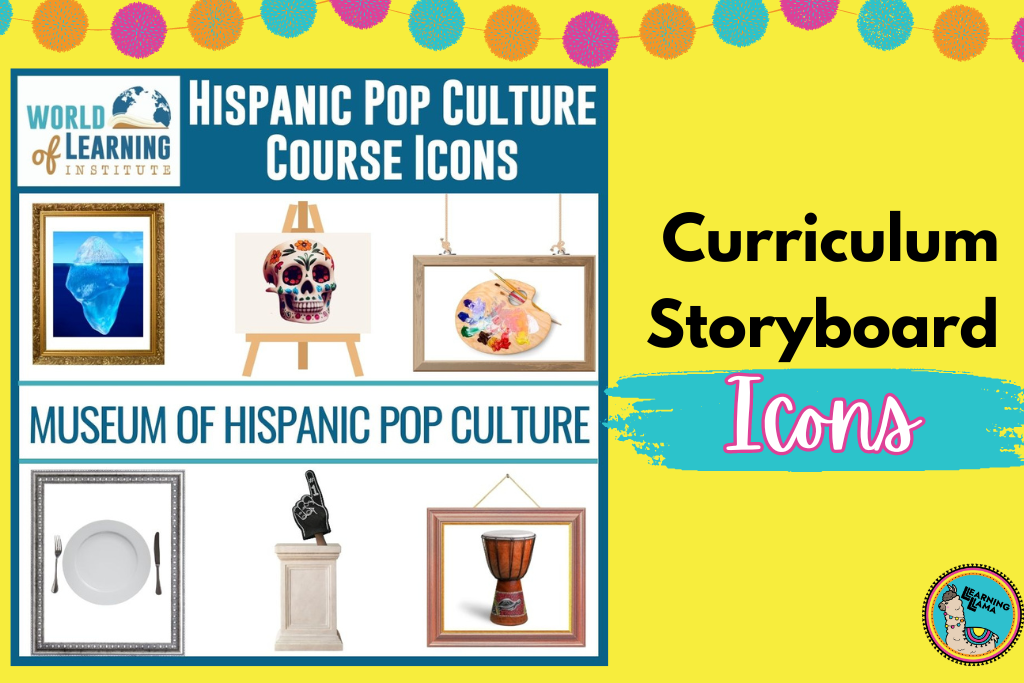
So, when asked to redesign our Spanish 3 course, I had to create the “story” of Hispanic pop culture! What would you convey if you were telling this story?
Hispanic Pop Culture Class – A Spanish 3 Course
In my curriculum storyboard, I chose to create the story from the lens of students going through a museum of Hispanic Pop Culture. Each exhibit would be a different unit of study and would cover a topic of culture.
Many schools are beginning to offer cultural courses, not just as advanced courses, but even as introductory courses to the language or as electives. If your school is designing or thinking about this option, you’ll want to keep reading to hear the lessons that I learned when writing and teaching this culture class for the first time.
Lesson I Learned When Writing and Teaching a Culture Class
What Topics to Teach in a Culture Class?
This is completely up to you if you are designing a culture course. But keep in mind, culture is more than the 3 Fs: Food, Flags, Festivals. It goes much deeper, and depending on the level of your students, you should aim to go deeper as well. So, I recommend starting with the cultural iceberg. This metaphor reminds us that only a small amount of cultural aspects are “visible,” and there are actually much more below the surface or invisible. The sub-surface aspects influence the visible part of the iceberg and vice versa. Rather than focus solely on the visible aspects of culture, you should provide your students the chance to reflect on values, beliefs, assumptions, attitudes, etc.
Look at this image to get a better understanding and see examples. And for some resources, I used this lesson plan and free worksheet from the Peace Corps. Here is another lesson plan that is very hands-on and lets students reflect on what culture means to them first.
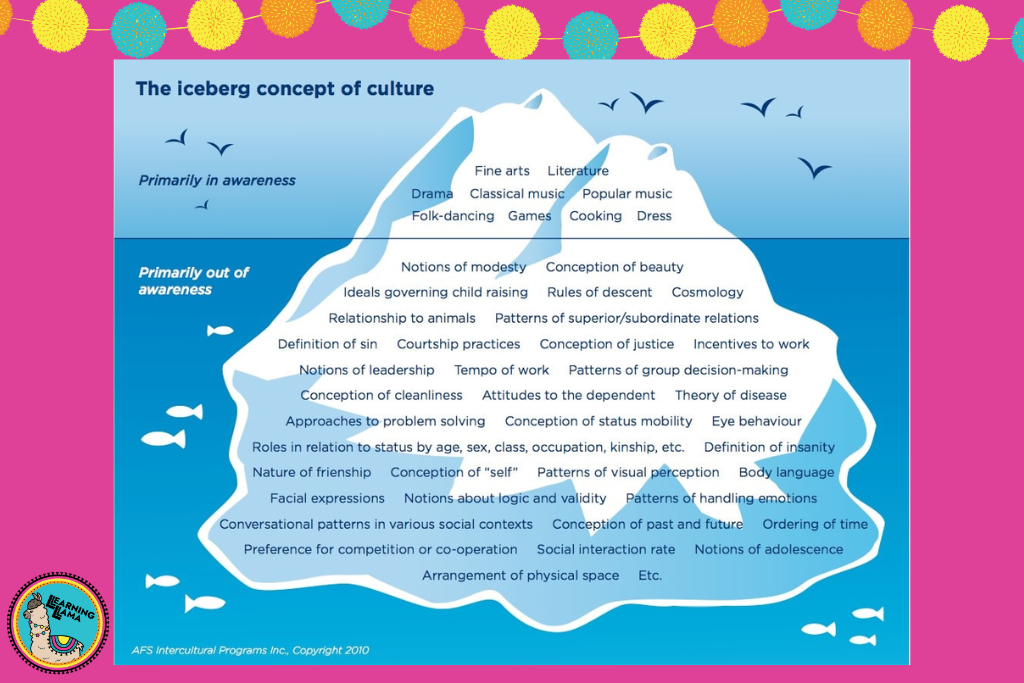
From there, I dove into the various units that I decided to cover. There is no right or wrong way to design a culture class. You may prefer to teach a unit on movies and literature. Someone else might substitute that for music. We can only do so much in a year! I chose: Traditions, Fine Arts, Food, Sports, and Music.
Here are some helpful blog posts for culture units that I teach:
- Teaching Art in Spanish Class
- Complete Collection of 15 Activities to Teach About Food in Spanish Class
Start with THEIR culture
Before diving into Hispanic culture, students should be aware of their own culture. This will give perspective when learning about other cultures and also a grounds for comparisons. To truly develop interculturally competent students, they must have an appreciation and understanding of their own culture before being able to compare it to another without having stereotypes or misconceptions.
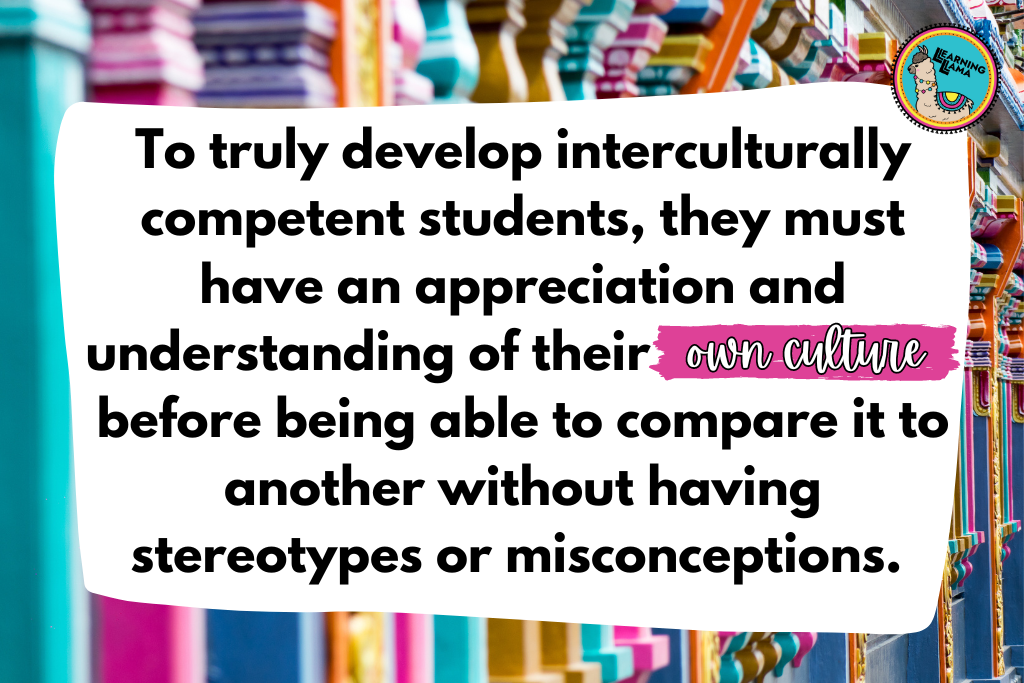
To help develop a habit of self-reflection, it is important for learners to pause and withhold judgment when learning about, analyzing, and interpreting cultural products, practices and perspectives.
After learning about the cultural iceberg that I referenced, I then spent a few weeks on “American” culture. We discussed and learned about the same topics from the upcoming units in the Hispanic pop culture course, but with a focus on the United States. This would give a starting reference point when learning about other cultures.
Here are some example lesson plans and objectives from ACTFL for various grade levels with the learning target for intercultural communication.
3 Ps of Culture: Products, Practices, Perspectives
The cultural framework of culture can sometimes be referred to as the 3 Ps:
- Products are the items of a particular culture: food, arts and crafts, books, dress, music, etc.
- Practices are patterns of social interactions or behaviors accepted by a society: rites of passage, discourse, use of personal space, etc.
- Perspectives represent that culture’s view of the world: meanings, attitudes, values, etc.
When teaching culture, try to always reference back to the 3 Ps. You can grab a free worksheet about the 3 Ps on my Spanish Teacher Survival Guide. I encourage my students to reference this throughout the course. When learning about a new cultural element, we then take a blank one (or I create a Google Slides or gallery walk for interactive participation) for students to identify the 3 Ps of what we have been learning.
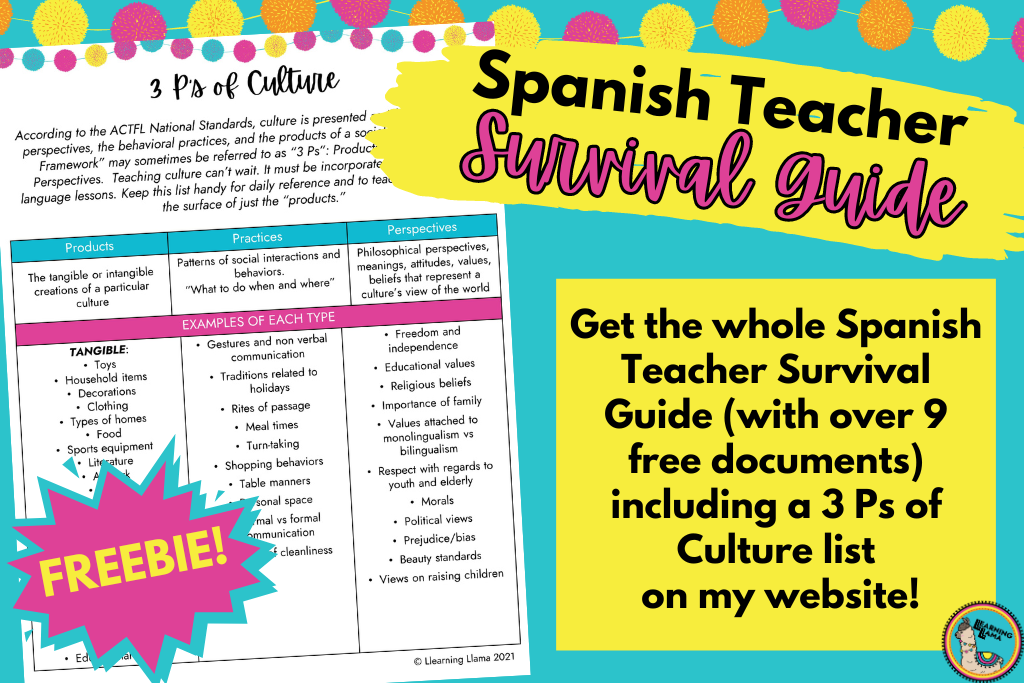
Make Culture Diverse
As Spanish teachers, we all have our favorite countries and cultures. Maybe you grew up in Puerto Rico or you have family ties in Panama. Maybe you studied abroad in Spain or did a service project in Venezuela? Or like me, traveled to (and fell in love with) Peru! I have also taken mission trips to Guatemala and traveled to Costa Rica. So, my personal knowledge of Hispanic culture is deeply rooted in the three countries I visited. I of course do a lot of research, read articles, watch documentaries, and more of other countries to broaden my horizons.
But we tend to want to share our experiences not only because it is easier, but because telling those stories makes a great impact. However, if we do not highlight all Spanish-speaking countries in some way throughout a culture course, we are doing a disservice to our students. We may not be able to equally cover all the countries, but exposure is better than nothing!
Try to provide authentic images, news articles, descriptions of famous people, historical events, or landmarks from a variety of countries throughout the course of the year.
Less is More
How do you narrow down “Hispanic Pop Culture” into one culture class, accessible to Spanish 3 students? This was the greatest challenge for me when designing this course. It is tempting to want to include everything… every Hispanic sport or every painting by Frida Kahlo or every country’s most well-known food item. But that will lead to overload for everyone.
As hard as it is to make a choice, choose a few things to focus on within each unit. For example, if you are studying art, then choose 3 or 4 artists and focus on each one’s biography, art style, examples of paintings, etc. Break it down so you do one at a time, students have time to reflect and create before moving onto the next. Another example is a food unit. It is perfectly fine to spend one week on “asado” or one week on “tapas.” The amount of authentic resources is basically infinite! Menus, videos, restaurant websites, images, infographics… you will have plenty to teach from. And you want your students to walk away appreciating and understanding the culture, not glossing over it.
If you were to design or teach a Hispanic Culture Course, what elements of culture would you include? Or if you already do, what is your favorite unit to teach or a lesson that you have learned? Comment below. I would love to hear from you!

